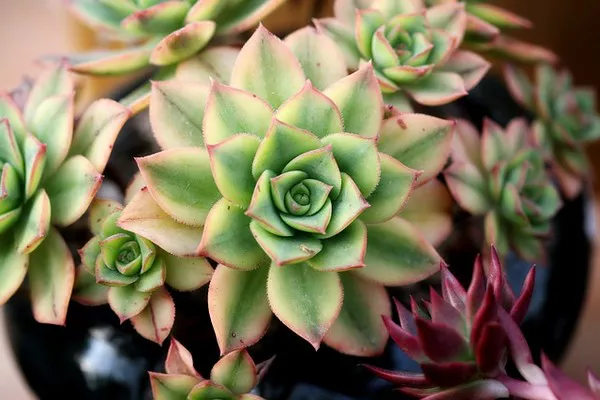Succulents have soared in popularity as indoor and outdoor plants due to their low maintenance requirements and unique aesthetic appeal. These resilient plants come in a vast array of shapes, sizes, and colors, making them a favorite among both novice and experienced gardeners. However, while succulents are often touted as easy-to-care-for plants, they still require proper attention to ensure their health and vitality. In this comprehensive guide, we’ll delve into the essential aspects of succulent care to help you cultivate thriving specimens and unlock the beauty of these remarkable plants.
Understanding Succulents: A Brief Overview
Before delving into care tips, it’s crucial to understand the unique characteristics of succulents. Succulents are a diverse group of plants characterized by their ability to store water in their leaves, stems, or roots. This adaptation allows them to thrive in arid climates with limited water availability. While many succulents originate from desert regions, they can also be found in various habitats worldwide, from tropical forests to alpine slopes.
Selecting the Right Succulent
The first step in caring for succulents is choosing the right plants for your environment. With countless species and cultivars available, selecting the perfect succulent can seem daunting. Here are some factors to consider:
1. Light Requirements: Most succulents thrive in bright, indirect sunlight. However, some species, such as Haworthias and Gasterias, prefer partial shade. Assess the lighting conditions in your home or garden before selecting your succulents.
2. Watering Needs: Different succulent species have varying water requirements. While most prefer infrequent watering, some thrive with more moisture. Research the specific needs of each succulent variety to ensure proper care.
3. Size and Growth Habit: Consider the mature size and growth habit of the succulent. Some species, like Echeverias, form rosettes and stay relatively compact, making them ideal for small spaces. Others, such as Agaves and Yuccas, can grow quite large and may require more room to thrive.
4. Climate Compatibility: Choose succulents that are well-suited to your climate. While many succulents are adaptable to different conditions, selecting species native to your region can simplify care and promote healthy growth.
Essential Care Tips
Once you’ve selected your succulents, it’s time to provide them with the care they need to thrive. Here are some essential tips for succulent care:
1. Proper Potting Mix: Succulents require well-draining soil to prevent waterlogged roots and rot. Use a specialized succulent or cactus potting mix, or create your own by combining potting soil with perlite or coarse sand to improve drainage.
2. Suitable Containers: Choose containers with drainage holes to allow excess water to escape freely. Avoid pots that retain moisture, such as glazed ceramic or glass containers, as they can lead to root rot.
3. Watering Techniques: Succulents are drought-tolerant plants that prefer to dry out between waterings. Water deeply, allowing the soil to become slightly dry before watering again. Avoid overwatering, as it can cause root rot and other issues.
4. Optimal Watering Schedule: The frequency of watering depends on factors such as temperature, humidity, and the specific needs of the succulent. In general, water your succulents more sparingly during the dormant winter months and increase frequency during the active growing season in spring and summer.
5. Lighting Conditions: Place your succulents in a location with bright, indirect sunlight. South or west-facing windows are ideal, as they provide ample sunlight without the intense heat that can scorch the plants.
6. Temperature and Humidity: Succulents thrive in warm, dry conditions typical of their native habitats. Avoid exposing them to extreme temperature fluctuations or high humidity, as it can increase the risk of fungal diseases.
7. Pruning and Maintenance: Remove dead or yellowing leaves to promote airflow and prevent the spread of disease. Prune leggy growth to encourage a more compact and attractive appearance.
8. Fertilization: While succulents are not heavy feeders, occasional fertilization can promote healthy growth and vibrant foliage. Use a balanced, water-soluble fertilizer diluted to half strength during the growing season.
9. Pest and Disease Management: Keep an eye out for common pests such as mealybugs, aphids, and spider mites, especially when growing succulents indoors. Treat infestations promptly with insecticidal soap or neem oil. Additionally, avoid overwatering to prevent fungal diseases such as powdery mildew and root rot.
10. Seasonal Adjustments: Make seasonal adjustments to your care routine to accommodate changes in light, temperature, and humidity. Reduce watering and fertilization during the winter months when succulents enter dormancy, and increase care as they resume active growth in spring.
Conclusion
With their striking appearance and minimal care requirements, succulents have become beloved additions to homes, offices, and gardens worldwide. By understanding their unique needs and providing proper care, you can enjoy healthy, thriving succulents that bring beauty and greenery to any space. Whether you’re a seasoned succulent enthusiast or a beginner gardener, mastering the art of succulent care will ensure years of enjoyment and satisfaction as you cultivate these fascinating plants.


